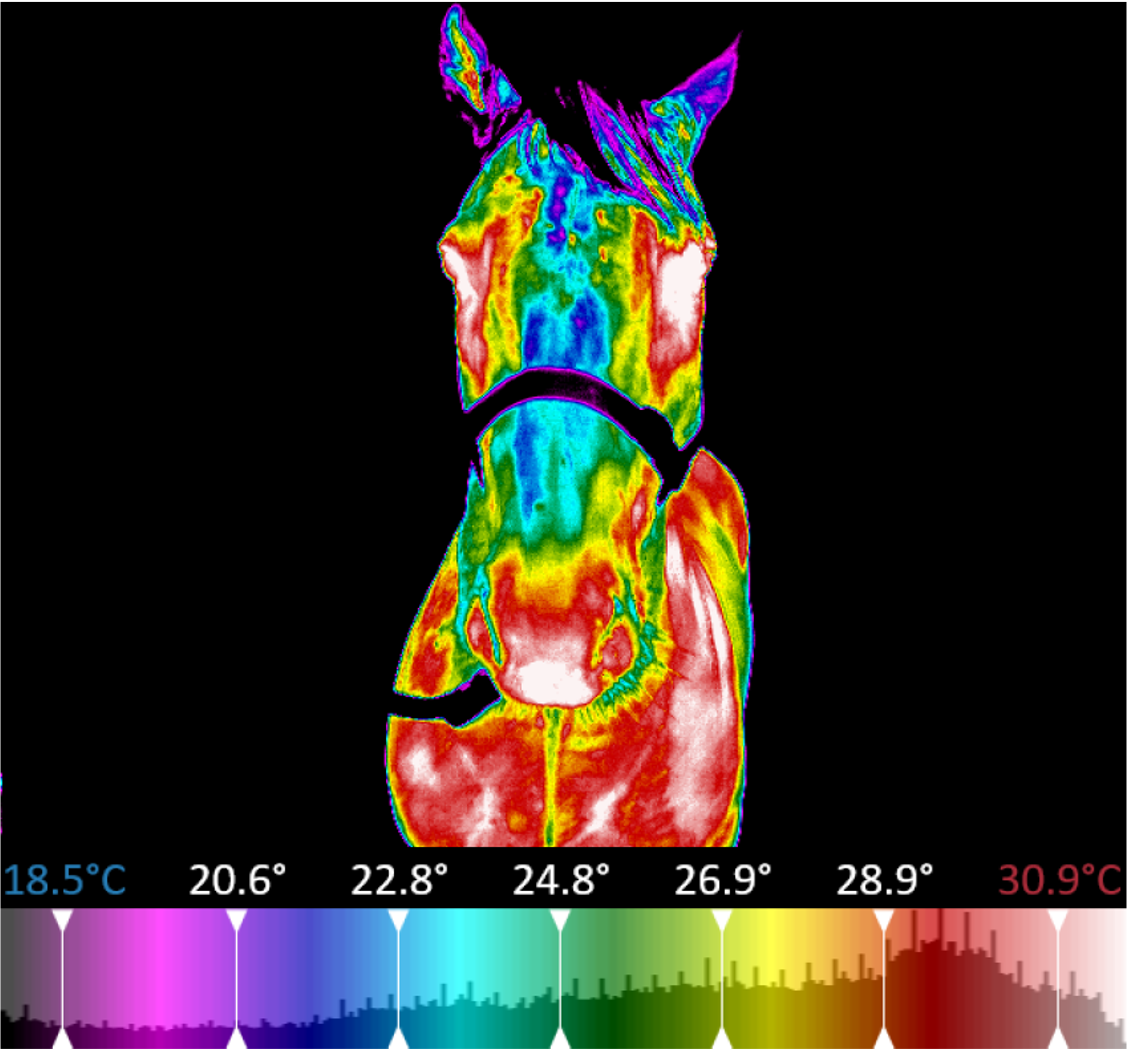Diagnostic Thermography
Abstract: Thermography is a practical aid in the clinical evaluation of the equine patient. It is particularly germane to the evaluation of lameness. This modality specifically increases the accuracy of diagnosis. Thermography is the pictorial representation of skin temperature.
The technique involves the detection of infrared radiation, which can be directly correlated to blood flow. To be accurate, thermography must be performed in a controlled area free of drafts. The area should be protected from sunlight to avoid erroneous heating of the skin, and the horse's hair length should be uniform.
Thermography detects heat before it is perceptible during routine physical examination and thus is useful for the early detection of laminitis, stress fractures, and tendinitis. It offers a noninvasive means of evaluating the blood supply to an injured region and represents one of the only reliable noninvasive means to evaluate blood flow to the foot of the horse.
Thermography is also useful for the early identification of stress injuries to the contralateral limb of convalescing orthopedic patients. Thermography is an excellent adjunct to clinical examination as well as being complementary to other imaging techniques such as radiology, ultrasonography, and scintigraphy.
Reference: T A Turner. (2001) Vet Clin North Am Equine Pract Apr;17(1):95-113
|
Interested in learning more about thermal imaging? Request a demonstration with Digatherm and discover how veterinary thermography can help you find problem areas faster and easily monitor treatment progress. |
